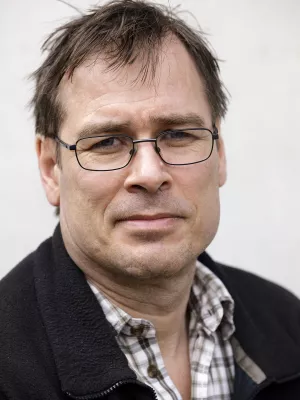
Henrik Smith
Professor

Backyard buzz : human population density modifies the value of vegetation cover for insect pollinators in a subtropical city
Author
Summary, in English
Urbanisation drives overall declines in insect pollinators. Although urban green spaces can provide suitable habitat for pollinators much remains to be learned about how urban landscapes either promote or negatively impact pollinators. We investigated how backyard design, local (100 m) and landscape (500 m) scale vegetation cover and human population density were associated with non-eusocial native bee species, eusocial bees (Apis mellifera and Tetragonula spp.), and hoverflies, in residential green spaces of the subtropical city Brisbane, Australia. We found that associations between bee abundance and vegetation cover were moderated by human density, but the direction of this effect differed for non-eusocial and eusocial species. Non-eusocial bee abundance was positively associated with tree cover at local and landscape scales when human densities were low, but negatively so at high human population densities. We suggest this may be because the quality of vegetation for non-eusocial bees deteriorates as human density increases. In contrast, abundance of eusocial bees was negatively associated with increasing local cover of grass and shrubs at low levels of human density, but positively associated at high densities. This affinity to humans could partly be explained by domesticated “kept” hives. We found no effect of urban gradients on bee species richness. Hoverfly abundance was negatively related to human density and positively related to vegetation cover at local and landscape scales. At the backyard scale, both bee species richness and bee and hoverfly abundances were positively associated to flower abundance. Backyards with more vegetation cover had higher densities of non-eusocial bees. Our results thus support the idea that urban greening in densely populated areas at multiple spatial scales can benefit a range of insect pollinators.
Department/s
- Biodiversity and Conservation Science
- Centre for Environmental and Climate Science (CEC)
- BECC: Biodiversity and Ecosystem services in a Changing Climate
- Lund university sustainability forum
- Biodiversity
Publishing year
2022-09-12
Language
English
Publication/Series
Urban Ecosystems
Document type
Journal article
Publisher
Springer
Topic
- Ecology
- Landscape Architecture
Keywords
- Floral resources
- Garden design
- Habitat complementation
- Pollination service
- Urban biodiversity
- Urban planning
Status
Published
Research group
- Biodiversity and Conservation Science
ISBN/ISSN/Other
- ISSN: 1083-8155